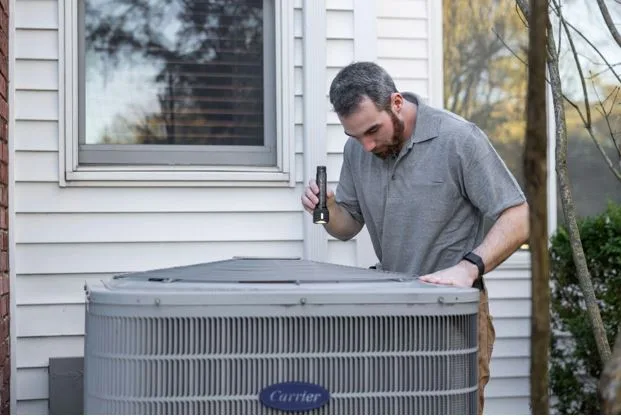Energy-Efficient HVAC Upgrades That Always Pay Off
Tired of your energy bill spiking every time the temperature climbs? You’re not the only one. A lot of people don’t realise just how much energy their HVAC system eats up, especially in places where it’s running almost non-stop. The good news? You don’t need to replace your entire system to see a difference. Just a few smart upgrades can lead to big improvements in comfort and savings. From small tech changes to better insulation, even minor fixes can lower your costs and help your HVAC system work more efficiently year-round.
If you’re looking for ways to make your home more efficient without going overboard, this guide breaks down the HVAC upgrades that are actually worth your time and money.
1. Efficiency Starts With the Basics
Before jumping into high-tech upgrades, it’s important to make sure your current system is actually working the way it should. If your HVAC unit hasn’t had any attention in a while, it may be working harder than necessary. And the harder it works, the more energy it uses—and the more money you lose.
That’s why it is important to stay on top of regular AC maintenance as a homeowner. Having a professional check and service your unit helps it run smoothly and prevents issues that can lower efficiency. Maintenance typically includes cleaning coils, checking refrigerant levels, tightening electrical connections, and making sure your filters are clean. All of this helps your system use less energy and last longer. If your goal is energy efficiency, keeping up with basic maintenance makes every other upgrade more effective.
2. Smart Thermostats That Help You Waste Less
Smart thermostats have become a go-to upgrade for homeowners who want better control over their energy use. These devices learn your habits, adjust temperatures when you’re away, and even let you control your HVAC from your phone. Some models provide energy reports so you can see when your system is using the most power and make changes to cut back.
The savings can add up fast. A smart thermostat can reduce energy use by adjusting temperatures when you’re asleep or out of the house—something a manual system just can’t do as well. And because they’re relatively affordable and easy to install, smart thermostats are one of the best entry-level upgrades you can make.
3. High-Efficiency HVAC Units: Worth the Investment
If your HVAC system is over 10 years old, it might be time to consider an upgrade. Newer systems use advanced technology to cool and heat more effectively while using less energy. When shopping for a replacement, look at the SEER (Seasonal Energy Efficiency Ratio) rating. The higher the number, the more efficient the system.
High-efficiency units might cost more upfront, but the long-term savings can be significant. Many utility companies also offer rebates or incentives for installing energy-efficient equipment. Plus, with a new system, you’re less likely to run into repair issues in the middle of a heatwave.
4. Seal Up the Gaps: Ductwork & Insulation Fixes
You could have the best HVAC system in the world, but if your ducts are leaking or your home isn’t insulated well, you’re wasting energy. Air escaping through poorly sealed ducts can cause major efficiency losses. If your attic or crawl spaces aren’t insulated, cooled or heated air will leave your home faster than your system can replace it.
A professional duct sealing service can help fix leaks and improve airflow. Adding or upgrading insulation—especially in attics and around ductwork—can also make a noticeable difference. These upgrades may not sound exciting, but they’re often the most practical.
5. Variable-Speed Motors: Smooth, Quiet, and Efficient
Traditional HVAC systems turn on at full power, run for a while, then shut off completely. This stop-and-start process isn’t great for efficiency or comfort. Variable-speed systems, on the other hand, adjust their output depending on what your home needs at any given time.
This means your system runs at lower speeds for longer periods, maintaining a consistent temperature and using less energy. It’s quieter, puts less stress on your system, and helps control humidity better than single-speed models. If you’re upgrading your system, ask about variable-speed motors—they’re a great long-term investment.
6. Zoned Systems: Cool Where You Need It
A zoned HVAC system lets you divide your home into different areas, each with its own temperature control. If you’ve ever fought over the thermostat because one room is too cold while another feels like an oven, zoning is your solution.
With a zoned setup, you can cool only the areas you’re using. This reduces energy waste and increases comfort, especially in multi-level homes or houses with large, sun-exposed rooms. Zoning works well with smart thermostats, too, giving you even more control over your environment.
Zoned systems also help extend the life of your HVAC unit by reducing unnecessary wear and tear. Over time, this leads to noticeable energy savings.
7. ERVs: Fresh Air with Fewer Losses
Energy Recovery Ventilators (ERVs) are designed to bring fresh air into your home without letting energy escape. They transfer heat and moisture between incoming and outgoing air, so your system doesn’t have to work as hard to keep things comfortable.
This is especially helpful in well-sealed homes where airflow is limited. Without proper ventilation, indoor air can become stale or filled with pollutants. An ERV keeps the air fresh while helping your HVAC system stay efficient.
Even small HVAC upgrades can lead to major benefits when it comes to saving energy and money. Whether you’re starting with a smart thermostat or thinking about a full system upgrade, there are plenty of options that offer real results. Just make sure your foundation is solid—start with a system that’s clean, maintained, and running properly. From there, you can layer on smart upgrades that keep your home comfortable and your energy bills under control.
You don’t need to do it all at once. Pick one or two upgrades, see how they impact your comfort and costs, and go from there.




